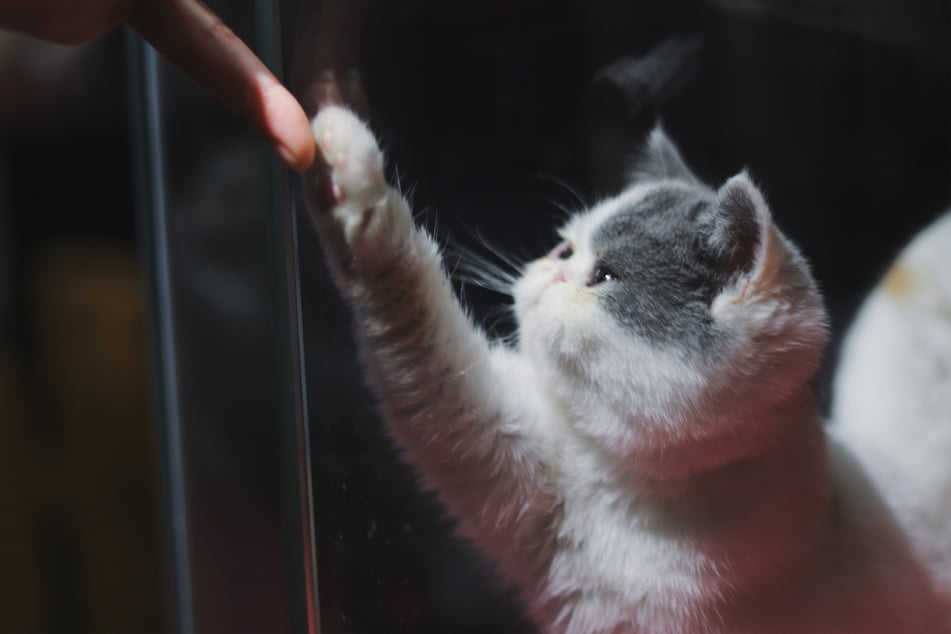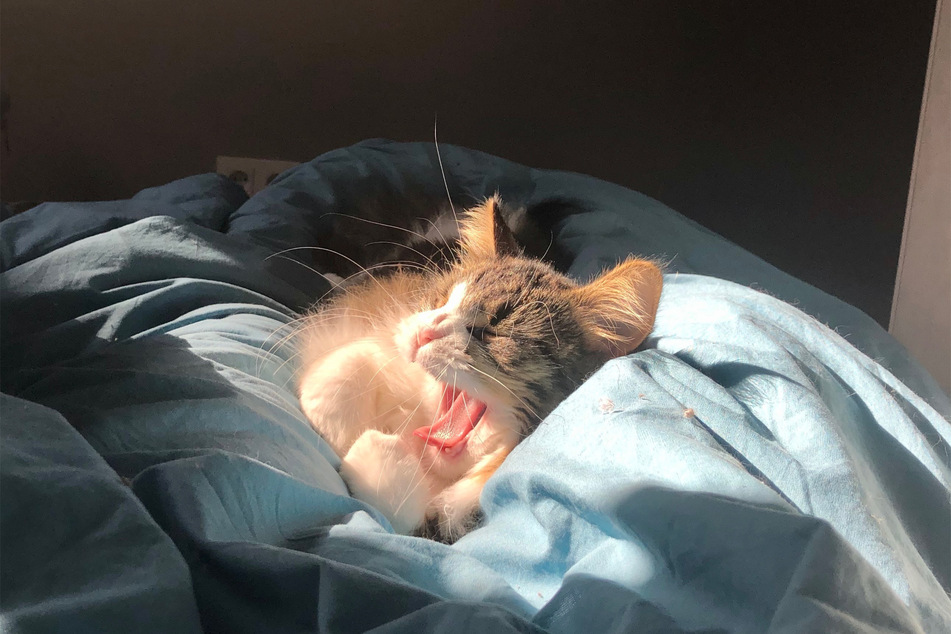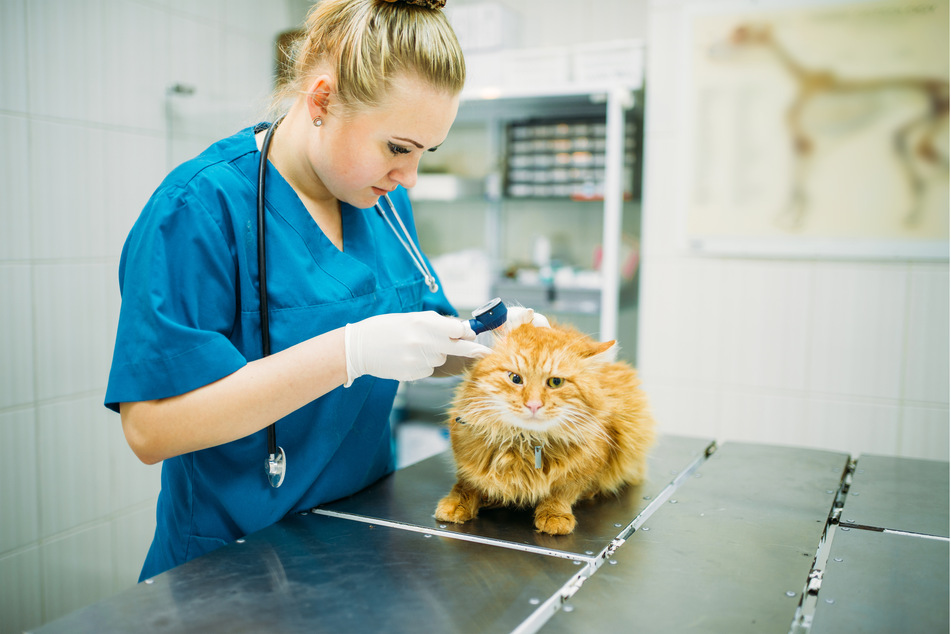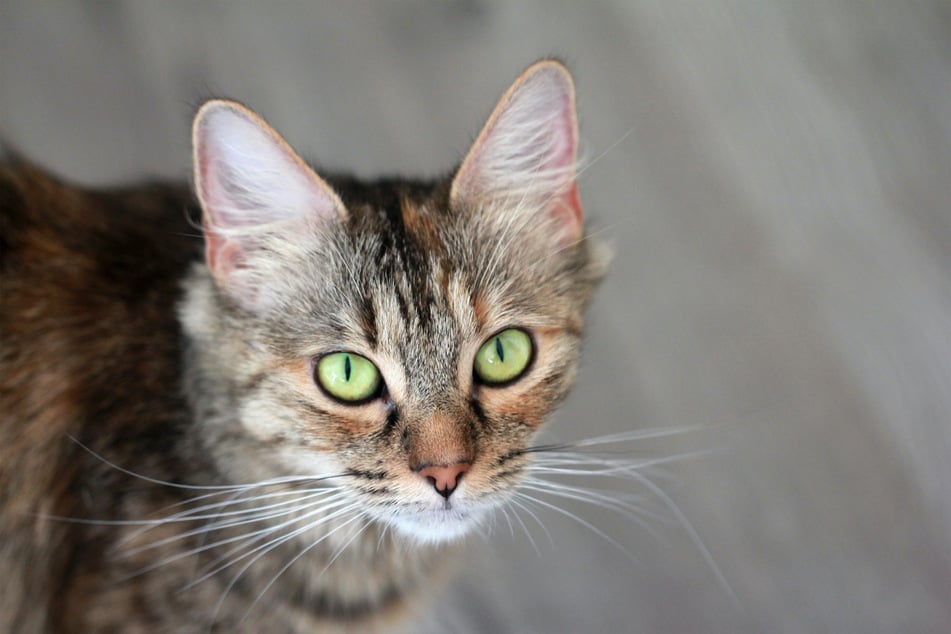Diabetes in cats: Symptoms, treatments, and life expectancy
There are few things more devastating to a cat's health than diabetes. While there are treatments available, cat diabetes can be hard to discover and often lower their life expectancy. Here's everything you need to know.

Cats can get diabetes too, and when they do, it can become even worse than it does in humans. What are the signs to look out for, the cat diabetes symptoms to notice, and what treatments are available?
There's a lot to understand, but there's one thing more important than anything else: If you suspect that your cat has diabetes, take it straight to the veterinarian.
In this cat guide, TAG24 will take a look at everything you need to know about diabetes in cats. What are the symptoms of the disease, the treatments, and how long can your kitty expect to live? Let's find out.
Important: We here at TAG24 are not experts on pet health. If you are ever concerned for your kitty, the person best suited to help is your veterinarian. It's important to note that we are not vets and we are not health experts, so the information included in this article should be taken with a pinch of salt.
Signs of diabetes in cats
It is generally agreed that there are four different signs of a diabetic cat. What's important to note before we begin is that we have separated this section from "Symptoms," as here we are not focused on symptoms experienced by cats but on visible and noticeable signs seen by a cat's human owners.
The four main signs of diabetes in cats are important to study and understand because diabetes is a common and not unlikely thing you and your kitty may need to deal with. Indeed, studies show that cats are more than three times more likely to develop diabetes than dogs.
Here are the four primary signs of diabetes in cats
Incredible thirst and dehydration: If your cat has started drinking far more water than previously, it is possibly a sign of diabetes. Monitor how much they drink and how often you refill their water bowl so that you can give that information to the vet.
Increasing need to urinate: Alongside the increased thirst, cats will start to urinate a lot more than normal. You can measure this by paying attention to your cat's litter box use.
Your cat eats more food than usual: Diabetes makes it hard for glucose to be processed by the cat's body. As a result, your cat might start begging for more food. This will get extreme, as your cat thinks that it is starving to death. Indeed, increased appetite is one of the most noticeable and potentially dangerous symptoms.
Weight loss: Despite your cat's excessive need for food, and quite likely its increased consumption of food, it will likely start to lose a lot of weight. This is also due to the glucose not being absorbed properly into your cat's body.
Don't despair if you witness any of these cat diabetes signs, as many of them can also indicate other less serious issues. That being said, you should still play it safe and take your kitty to the veterinarian.
What causes cat diabetes?
Feline diabetes is not dissimilar to human diabetes, sharing some of the same symptoms and - as you are about to discover - the same causes. There are a variety of risk factors that often lead to a heightened risk of your cat developing diabetes, but it's important to first define what diabetes is.
A cat will develop a diabetes condition when its body cannot produce enough or respond properly to insulin. Insulin is a hormone that both regulates sugar levels in a cat's blood and helps in the absorption of glucose from that same sugar. As a result, a lack of insulin leads to heightened sugar levels and/or glucose not being properly processed by the cat's body.
There are a number of different kinds of cat diabetes, similar to how the condition manifests itself in humans. Type I diabetes is the least common and occurs when your cat's body can't produce enough insulin. The more common form, Type II, is when the cells of your cat's body don't respond appropriately to insulin.
Another note: Again, we are not doctors or veterinarians. For more information on what diabetes is and what is causing it, talk with your vet. Additionally, do not use this information to explain human diabetes. Instead, see a doctor.
There are a number of risk factors that increase the likelihood of diabetes in your cat. They include the following:
- Gender (male cats are more at risk)
- Obesity
- Age (older cats are more at risk)
- A lack of exercise
- Bad diet
- Neutering status (cats that are neutered are more at risk)
- If your cat is taking glucocorticoid steroid therapy
If your cat is at risk, it is a good idea to get it checked by the vet and have them help you develop a good diet to reduce these risk factors wherever possible.

Cat diabetes symptoms
Your cat will suffer many uncomfortable and unpleasant symptoms if it has diabetes. These various symptoms include things that are noticeable to their beloved humans and also things that are not. What's most important is that every cat owner takes note of how their fluffy friend behaves when healthy, so that they'll notice when something is going wrong.
Here are a number of major cat diabetes symptoms
- All previously discussed symptoms: Cats that have diabetes will become increasingly thirsty, will urinate a lot, will lose weight, and will eat more than they usually do.
- Fur changes: Diabetic cats often have very dry skin and a coat of fur that becomes flaky and scruffy. This is one of the most noticeable symptoms, as your cat will start shedding fur like crazy, making it look increasingly disheveled and sick.
- Reduced energy: The reason why your cat will become insanely hungry is related to the energy deficit created by diabetes. You may find that they become incredibly lethargic and unhappy. The first sign of this will probably be that your cat starts sleeping more often.
- Neuropathy: If you notice your cat dragging one or more of its limbs, or notice that it seems to have lost control of certain bodily functions, this could be a sign that your cat is becoming increasingly unwell.
- Behavior changes: We all get grumpy when we're sick, and cats are no exception. What's different, though, is that cats don't understand that they are sick. As a result, you can expect some pretty awful behavior.
- Digestive problems: If your cat starts vomiting, or its droppings change significantly and become more similar to diarrhea, this is a sign of diabetes.
Cats will often hide a lot of the more internal symptoms. Things like belly aches and various discomforts that come with diabetes will manifest in bad behavior. This is why it's so important to pay attention.
Cat diabetes symptoms legs
If your diabetic cat goes untreated, it will become at risk of a relatively rare but incredibly nasty condition called "Plantigrade". This occurs when the nerves in your cat's hind limbs experience damage due to the impacts of diabetes. As a result, your cat will walk with its knees very close to the ground.
What happens here is that your cat is putting all its weight on those ankles instead of where that weight should usually be distributed. While it can cause more long-term issues with your cat's joints, don't worry too much about plantigrade, as it's usually symptom-free.
With proper diabetes treatment, plantigrade in your cat's legs will resolve itself. In other words, it is a symptom that will be fixed once your cat's diabetes in under control.
Cat diabetes treatment

There are a variety of different treatments available for cats with diabetes. What these treatments all attempt to do, in various ways, is to restore normal levels of glucose in your cat's bloodstream while mitigating the adverse symptoms of its condition. That means combatting weight loss, getting it eating and drinking normally, and making sure that its blood sugar doesn't dip too low.
Two main treatment methods are used, both of which can be seriously effective if used properly. On top of that, cats with diabetes will need to be monitored regularly both by the cat's humans and with regular check-ups at the veterinarian's office. This will generally involve checking the cat's blood glucose levels and making sure that there are no unnecessary complications.
Here are the two main methods of cat diabetes treatment
Insulin therapy: This is all very complicated and really something you should be taught about by a vet, but the short explanation is this: Cats are given insulin injections under their skin (usually) every twelve(ish) hours. Of course, this will have to be done by the cat's owner as they cannot take the cat to the vet twice a day. Insulin therapy can be very expensive due to the cost of insulin, and the type of insulin will vary case-by-case.
Dietary therapy: Ideally, cats will already have diets that are very low in carbohydrates. The goal is to stop your cat's blood sugar from spiking by very carefully monitoring and administering a diabetes-friendly diet. Often this therapy is combined with insulin therapy, with many vets recommending that the two go hand-in-hand.
Of course, the type of food a cat should eat changes when it has diabetes, as does its eating schedule.
Cat diabetes food
A cat's diet is integral to its health and becomes even more important when a cat gets diabetes. What's important is that you start purchasing prescription-based food and you always go by your vet's advice. Also important is to understand that your cat may need to also lose weight throughout this process.
Ultimately, it's all about getting control over your cat's blood glucose levels. Some recommend doing this by feeding at the same time as their insulin shots, and others say that letting your cat slowly eat over the course of the day is best. In the end, what's most important is that the food contains as few carbohydrates as possible and that you do everything in consultation with your veterinarian.
Buy your cat food that has been designed specifically for diabetes. There are plenty of brands and plenty of options, and you may find that you need to experiment with a few before finding one that your kitty enjoys.

How long can a cat live with diabetes?
It has been reported that cats diagnosed with diabetes will live, on average, another three years if treated properly. Of course, this also depends on a number of other factors. Your cat's age, of course, is extremely important when considering how long its diabetic life will be.
On top of that, many of the risk factors associated with diabetes are also risk factors for other conditions. In general, cats that are obese or simply overweight will live shorter lives than other kitties, and a cat that's being fed a bad diet is also more likely to pass away sooner, even if it isn't overweight.
Ultimately, if your cat has been diagnosed with diabetes and you can afford full treatment, it is likely to stick around for another 2–3 years. You need to treat it well, however, and make sure that it is healthy in all other respects.
Diabetes in cats can be deadly
It's incredibly important to discover and get on top of cat diabetes very quickly if you want your beloved kitty to pull through and have a long, happy life. The symptoms of diabetes are rather nasty and, indeed, if left untreated, diabetes can become deadly. That would be tragic, so it's best to take immediate and direct action.
As with any cat-related health issue, a cat must be taken to the veterinarian if you suspect that something is wrong. They will prescribe the right drugs and give you the best available advice. Together, you, your kitty and your vet can pull through such an ordeal.
Cover photo: Unsplash/Raychan



